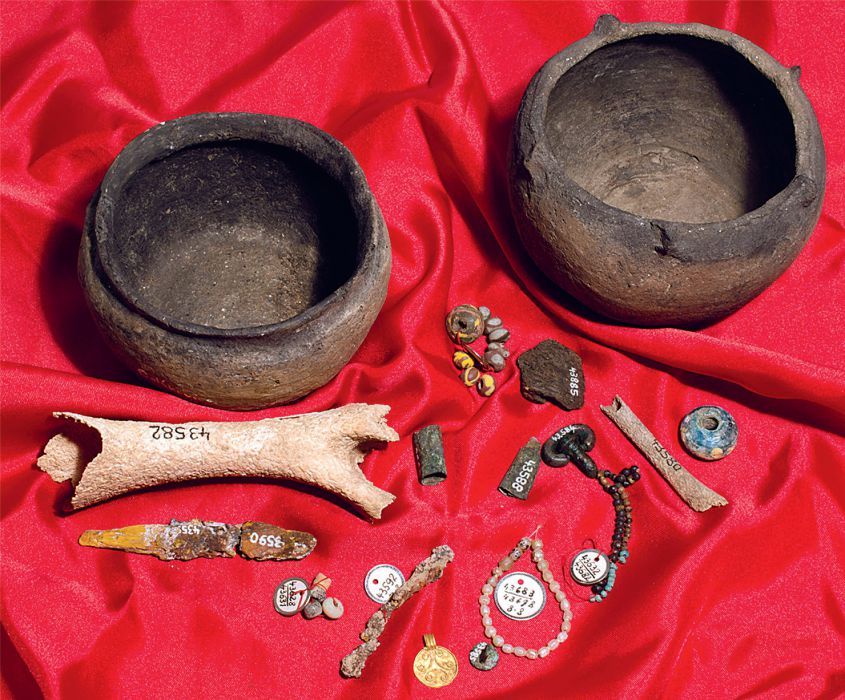Migration period glass from Záluží (Central Bohemia): archaeology and archaeometry
DOI:
https://doi.org/10.35686/AR.2021.9Keywords:
Migration period, cemetery, glass beads, archaeometry, SEM-EDS, LA-ICP-MSAbstract
With its at least 100 graves, the Migration period cemetery in Záluží by Čelákovice, Praha-východ district, investigated in the 1920s and 1930s ranks among the largest and most important sites from the end of the 5th to the middle of the 6th century AD in Bohemia. The same applies to the assemblage of glass composed of 168 beads and several additional artefacts. The chemical composition of the glass of 24 beads was identified using SEM-EDS and LA-ICP-MS. The results of these analyses indicated soda-lime glass of the natron type. An important result is the finding that translucent glasses belong to the ‘Intermediate group’, which was only recently identified in European archaeometric research. The composition of the glass in this group indicates that it was recycled glass, and in this sense the beads from Záluží contribute to the study of recycling in the first millennium AD in general.
Downloads

Downloads
Published
How to Cite
Issue
Section
License
Copyright (c) 2021 Kateřina Tomková, Natalie Venclová, Šárka Křížová, Tomáš Vaculovič, Veronika Faltusová

This work is licensed under a Creative Commons Attribution 4.0 International License.










